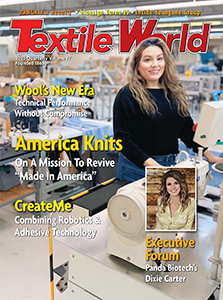GLEN RAVEN, N.C. — August 1, 2017 — Glen Raven Inc., a global provider of performance fabrics, has signed a Letter of Intent to acquire Sunbury Textile Mills, a designer and manufacturer of decorative jacquard fabrics. Under the agreement, Sunbury will become a wholly owned subsidiary of Glen Raven Inc. and will operate as part of Glen Raven Custom Fabrics LLC, best known as the maker of Sunbrella® fabrics.
“Sunbury has been a close strategic business partner for more than 20 years,” said Allen E. Gant, Jr., chairman and CEO of Glen Raven, Inc. “Sunbury’s leadership in serving the designer, decorative jobber and furniture manufacturers with premium jacquard fabrics is unparalleled. Every Sunbury customer is important to us and represents an opportunity to combine resources and be better suppliers and business partners.”
“We have long considered Sunbury to be part of the extended Glen Raven family, and we are excited about working with them to further service all of their markets and customers,” Gant added.
Sunbury’s team specializes in innovative decorative jacquard upholstery fabrics targeting the design community and luxury furniture manufacturers, for both residential and contract applications. Sunbury’s designers create bespoke collections, focusing on inspirational patterns, innovative constructions and leading color trends. The company’s product lines include Sunbrella fabrics, which it designs and produces under an exclusive license with Glen Raven.
“The long-term partnership has greatly expanded our ability to service customers with high-design, high-durability Sunbrella fabrics, and we see even more potential in the talented team at Sunbury and all the markets they serve,” said David Swers, president and COO, Glen Raven Custom Fabrics.
“Glen Raven is presenting Sunbury with an extraordinary opportunity to continue our growth path,” said Hank Truslow Jr., CEO, Sunbury Textile Mills. “We are looking forward to continuing to serve our customers with innovative solutions, superior design and unsurpassed levels of customer service as we’ve done for more than 60 years.”
Posted August 1, 2017
Source: Raven Custom Fabrics




